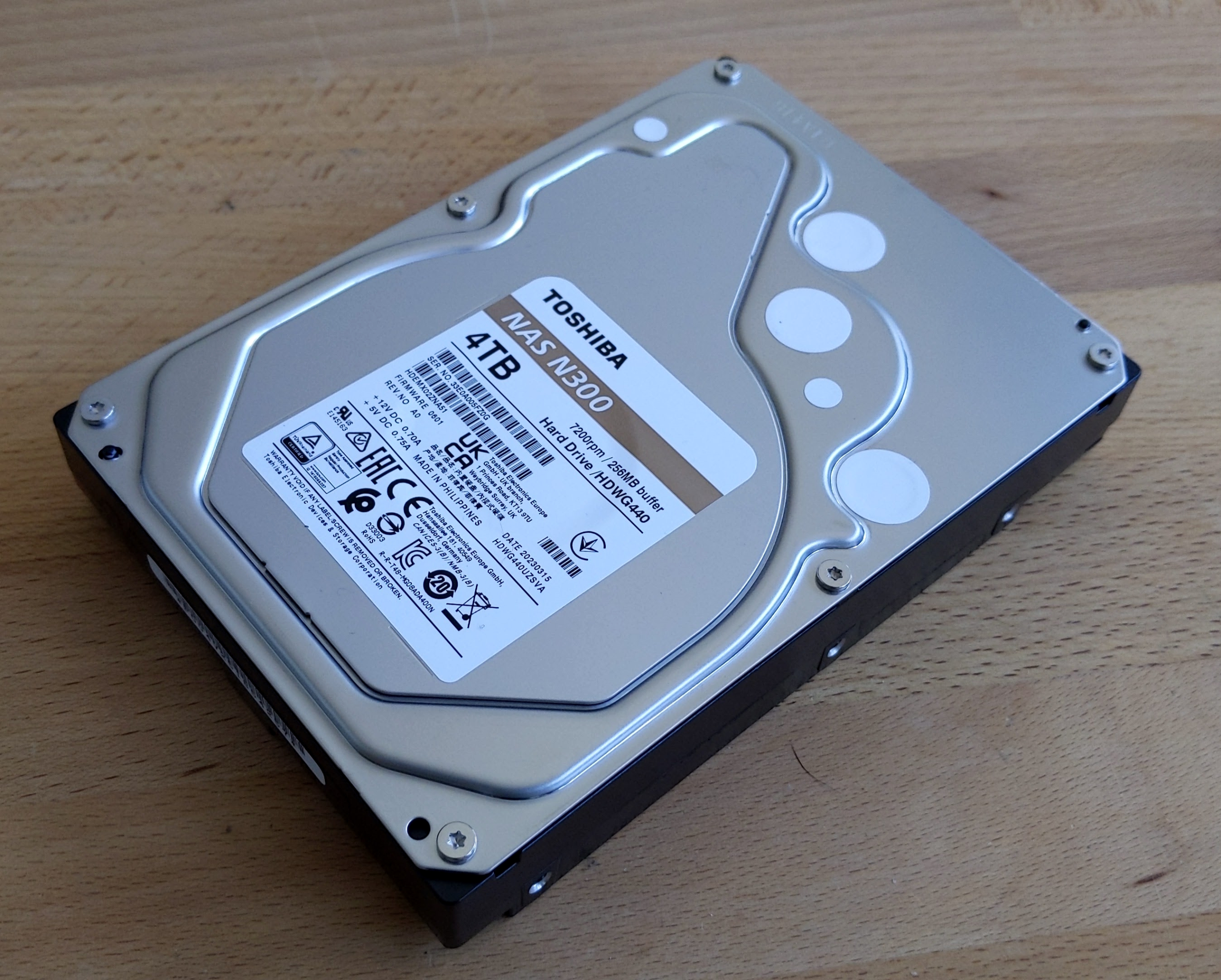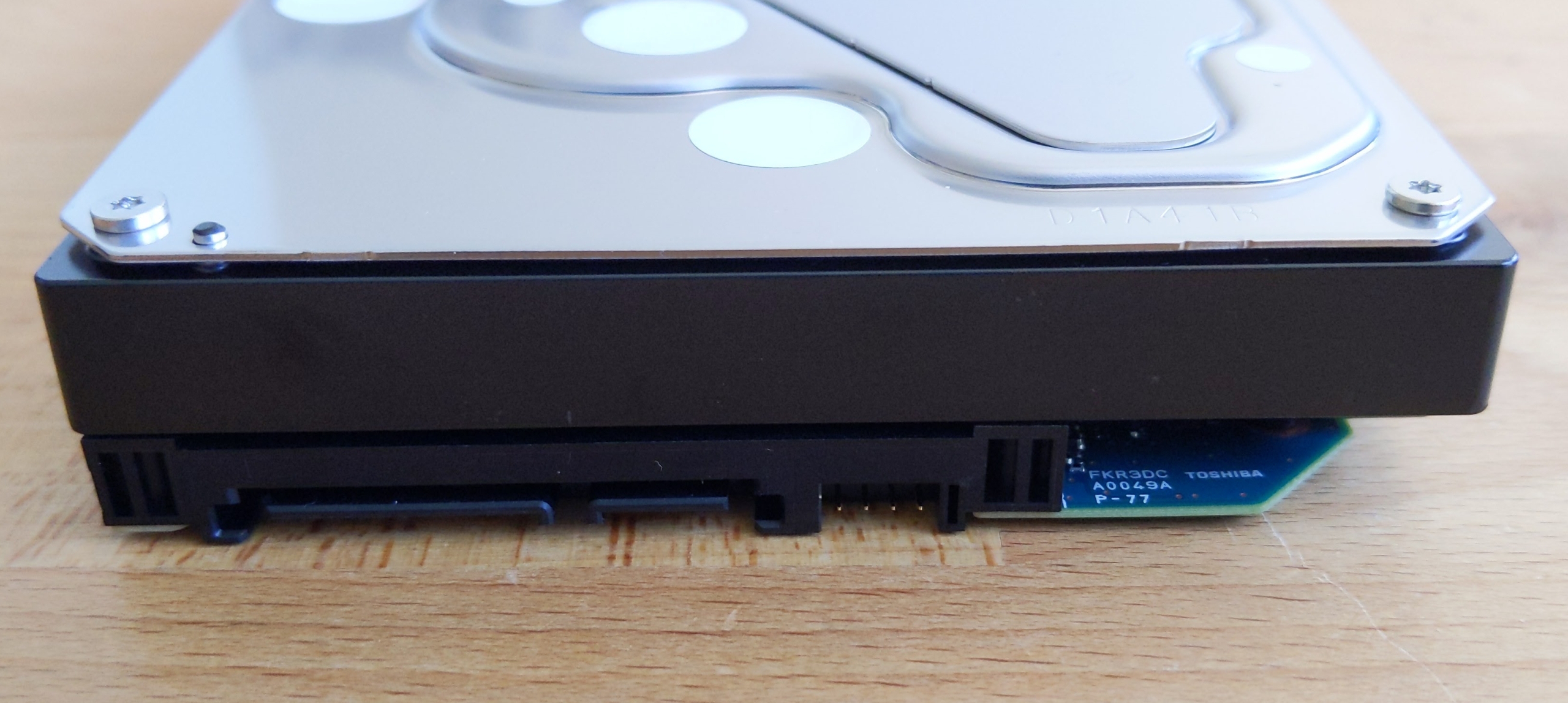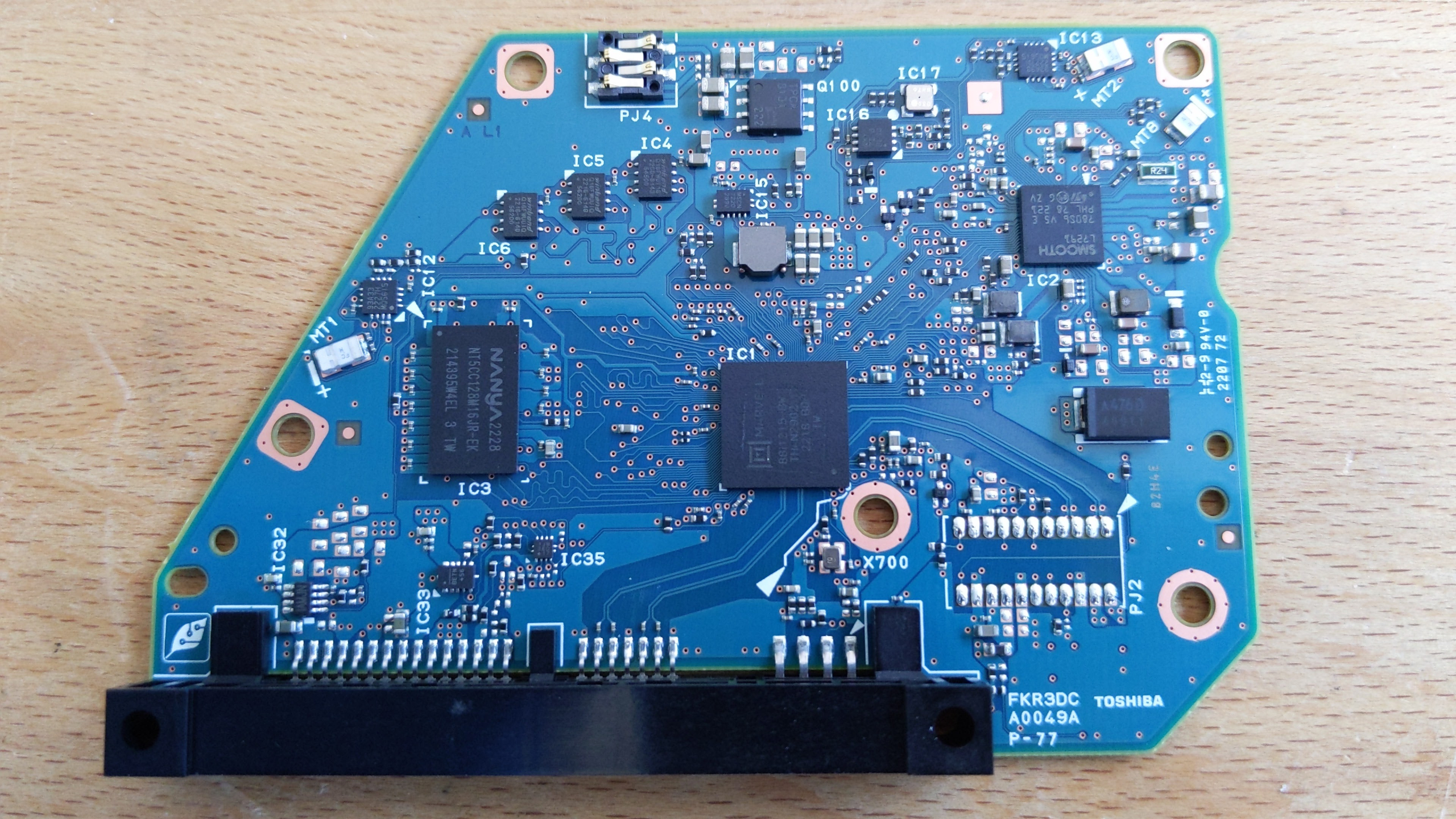The HDWG440 is built on Toshiba’s MG08-D drive architecture, a descendant born out of Toshiba’s acquisition of Fujitsu’s disk drive division in 2009. Of course, many points of innovation & iterative change have been made by Toshiba since, resulting in the types of drives we see from the company today (ignoring Hitachi-based HDA’s with the DT01 & DT02 line-ups).

Drive Attributes ------------------------------------------ Toshiba N300 NAS HDWG440 ------------------------------------------ Capacity 4TB Mfc Date 2023-03-15 Format 3.5" Interface SATA Platters 3 Heads 6 Cache 256MB RPM 7200 Protocol Serial-ATA/600 Origin Philippines (TSDP, ex-FCPP) ------------------------------------------
The HDWG440’s utilise 3-platters, equating to 1.33TB per-platter. With the HDWG440 being the lowest capacity member of the MG08-D family, the N300 line-up goes all the way up to 18TB with helium-based designs (as of June 2022). The MG08-D’s cap out with 5-platter configurations, the N300 counterpart being the HDWG480.

The label is a handy one, bearing all the information one may require from a hard drive. Spindle speed, cache, capacity, date of manufacturing, etc., everything is displayed.
This drive was produced in the Philippines, in a factory with past roots from Fujitsu, as mentioned above. Goldish brown is certainly somewhat of a deviation for designating NAS drive series, as compared to the chosen red for both Seagate and Western Digital.



The rear displays the PCB and slightly recessed base casting.

Taking the PCB off, a couple thermal pads are present for keeping both the microcontroller & spindle motor controller cool.

Speaking of the PCB, there’s only three major IC’s to take note of here. Nanya provide the 256MB of cache memory on this particular sample, STMicroelectronics supply the spindle motor controller, and finally a Marvell microcontroller sits in the centre. The IC markings are quite difficult to read on modern Marvell IC’s, but the image below may help if you’re curious.


As these drives age, I’ll make concise updates as to their health below, for those who are interested in a small sample case:
[2023-05-26] – All four drives are healthy!
If you missed the video I made on this drive, you can find it here: